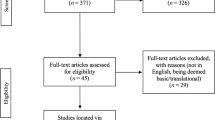Abstract
Two experiments examined the emergent mapping phenomenon in Portuguese-speaking children aged 3–13, This phenomenon is relevant to developmental psychologists’ interest in ‘last mapping” of new word-referent relations and also to behavior analysts’ interest in behavior that emerges without explicit conditioning. We studied 52 children, using the “blank comparison” matching-to-sample technique described by Wilkinson and McIlvane (1997), The technique allows direct measurement of the stimulus control bases of emergent mapping, for example, to determine whether new words and their referents are related directly or via rejection (i.e., exclusion) of previously defined referents. Children demonstrated both types of controlling relations. These studies systematically replicate prior emergent mapping research in a large cohort of non-English-speaking children. Also found were apparent developmental differences between older and younger children. Although all children tended to relate novel stimuli, the tendency appeared to decline as children aged. This study confirms the utility of the blank comparison technique in emergent mapping research and also provides the first data set from school-aged children.
Similar content being viewed by others
References
CAREY, S. (1982). Semantic developmentThe state of the art. In E. Wanner & L. R. Gleitman (Eds.), Language acquisition: The state of the art (pp. 265–293). Cambridge, MA: Mit Press.
CATANIA A. C. (1998). Learning. Upper Saddle River, NJ: Prentice Hall.
DIXON, L. S. (1977). The nature of control by spoken words over visual stimulus selection. Journai of the Experimental Analysis of Behavior, 27, 433–442.
DIXON, M. H., DIXON, L. S., & SPRADLIN, J. E. (1983). Analysis of individual differences of stimulus control among developmentally disabled children. In K. D. Gadow & I. Bialer (Eds.), Advances in learning and behavioral disabilities (pp. 85–110). New York: Jai Press.
DUBE, W. V. (1991). Computer software for stimulus control research with Macintosh computers. Experimental Analysis of Human Behavior Bulletin, 9, 28–30.
FERRARI, C., DE ROSE, J. O., & MCILVANE, W.J. (1993). Exclusion vs. selection training of auditory-visual conditional relations. Journal of Experimental Child Psychology, 56, 49–63.
GOLINKOFF, R. M., HIRSH-PASEK, K., BAILEY, L. M., & WENGER, N. R. (1992). Young children and adults use lexical principles to learn new nouns. Developmental Psychology, 28, 99–108.
KAGAN, J. (1981). The second year Cambridge: Harvard University Press.
KAY, D. A., & ANGLIN, J. M. (1982). Overextension and underextension in the child’s expressive and receptive speech. Journal of Child Language, 9, 83–98.
MARKMAN, E. M. (1989). How children constrain the possible meaning of words. New York: Cambridge University Press.
MCILVANE, W. J. & STODDARD, L. T. (1981). Acquisition of match ing-to-sample performances in severe mental retardation: Learning by exclusion. Journal of Mental Deficiency Research. 25, 33–48.
MCILVANE, W. J., KLEDARAS, J. B., MUNSON, L. O., KING, K. A. J., DE ROSE, J. O., & STODDARD, L. T. (1987). Controlling relations in conditional discrimination and matching by exclusion. Journal of the Experimental Analysis of Behavior, 48, 187–208.
MCILVANE, W.J., KLEDARAS, J. B., LOWRY, M.W. & STODDARD, L.T. (1992). Studies of exclusion in individuals with severe mental retardation. Research in Developmental Disabilities, 13, 509–532.
SERNA, R. W., DUBE, W. V., & MCILVANE, W. J. (1997). Assessing same/different judgments in individuals with severe intellectual disabilities: A status report. Research in Developmental Disabilities, 18, 343–368.
SERNA, R. W., WILKINSON, K. M., & MCILVANE, W. J. (1998). Blank comparison assessment of stimulus-stimulus relations in individuals with mental retardation: A methodological note. American Journal on Mental Retardation, 103, 60–74.
SKINNER, B. F. (1957). Verbal behavior. New York: Appleton-Century-Crofts.
STEVENSON, H. W. (1972). Children’s learning. New York: Appleton-Century-Crofts.
VINCENT-SMITH, L., BRICKER, D., & BRICKER, W. (1974). Acquisition of receptive vocabulary in the toddler-age child. Child Development, 45, 189–193.
WILKINSON, K. M., & MCILVANE, W. J. (1997). Blank comparison analysis of emergent symbolic mapping by young children. Journal of Experimental Child Psychology, 67, 115–130.
Author information
Authors and Affiliations
Corresponding author
Additional information
This collaboration was supported in part by a Brazilian interinstitutional project grant (MCT/FINEP/PRONEX) and by grants from two Brazilian funding agencies: CNPq (Grant #522290/95-7 to Deisy G. de Souza) and FAPESP (to Julio C. de Rose). The experiments reported here were part of master’s research conducted by Aline da Costa under the supervision of Deisy de Souza in the Graduate Program in Special Education at the Universidade Federal de São Carlos. Scholarship support from CAPES is gratefully acknowledged.
William McIlvane and Krista Wilkinson were supported by grants from the U. S. National Institute of Child Health and Human Development (HD25995 and HD04147).
Rights and permissions
About this article
Cite this article
Costa, A.R.A., Wilkinson, K.M., McIlvane, W.J. et al. Emergent Word-Object Mapping By Children: Further Studies Using the Blank Comparison Technique. Psychol Rec 51, 343–355 (2001). https://doi.org/10.1007/BF03395403
Published:
Issue Date:
DOI: https://doi.org/10.1007/BF03395403




